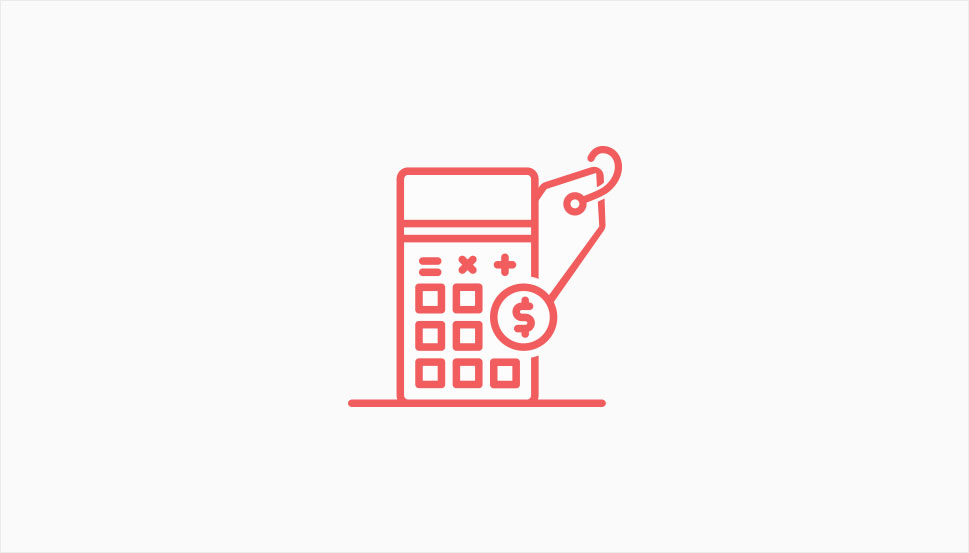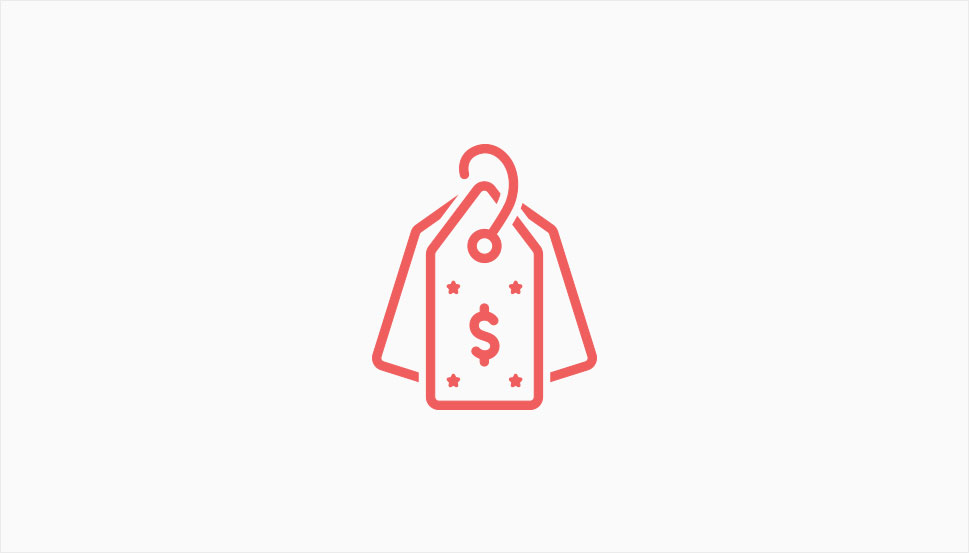How to Create the Best Pricing Strategy for Your WooCommerce Store

People say that a thing is worth whatever the buyer is willing to pay for it. Sounds a little too simple? That’s because it is. From a sales point of view, figuring out what enough people will be willing to pay for what you’re offering is the hard part. Still, it is the cornerstone of a pricing strategy, and price is the deciding factor for your earnings.
In this article, we will be giving you some advice on how to formulate the best pricing strategy for your WooCommerce store. Note that there are many different strategies, all of which might prove successful for some vendors and unsuccessful for others – there is no recipe for success, in other words. If there were, everybody would be following it, and everybody would be making a mint. There are, however, some pretty clear dos and don’ts which work for more or less everyone.
Here are the topics we will be discussing:

Many sellers are tempted simply to look at their competitor’s prices and just tweak the numbers a little. The price, however, is more than just a tag containing an amount and a currency symbol: the price is also a message for your prospects and your shoppers. An effective pricing strategy helps you position yourself in relation to your customers while helping you achieve your sales goals.
Consider a product advertised at half or less than what is expected. On the surface, it may sound like a good bargain, but people are not stupid: if it’s too good to be true, it probably is. Your prospective shoppers may associate the low price with poor workmanship, sweatshops, low quality, and other undesirable things. A well-priced product will reflect the value of the product.
Conversely, too high a price may cause your prospects to feel uncertain about buying your products. They may fear buyer’s remorse more strongly or more frequently if they feel that they have spent too much.
Ideally, your product’s price will influence potential shoppers to buy your product over your competitors’ alternatives. Before formulating a pricing strategy, you should answer this important question: whom are you selling to?
You may be catering to customers looking for a bargain, or you may be offering luxury products at premium prices, or operate anywhere in between. Once you know to whom you are selling, you should start asking yourself some other questions:
Does the price reflect the value of the product? Is the price off-putting? What volume of traffic will bring me profit at these prices? How much variation in pricing can I afford? Who are my competitors and what are their pricing policies?
Once you have a somewhat clear idea of what your goals are, you can start considering the specifics of your strategy.

In this section, we will outline some of the most common pricing strategies in abstract terms. You should familiarize yourself with them even if you don’t plan on using them: they might still give you ideas about what is available. This is also not an exhaustive list: there are items on it you can mix, match and combine for best results.
Cost-Plus Pricing
This is probably the simplest and the commonest strategy of all: figure out what your product costs to produce and add a percentage or an amount (also known as a markup) to it. The markup is up to you, of course, but it should cover shipping costs, storage (unless you are employing the dropshipping model), tax, other expenses (if any), and, of course, a profit margin. This approach is likely to work with physical products, especially generic ones, unless your competitors are doing more to attract customers.
Value-Based Pricing
This one goes back all the way to the first sentence in this article: figure out what your shoppers think your products are worth, and set the price to that value. You can figure it out by trial and error or by employing market research, but the principle remains the same. It requires you to constantly listen to the market for noises of approval or reproach, and adjusting your prices accordingly. Note that this differs from dynamic pricing described below: the object is to maximize customer satisfaction in terms of value they feel they are getting.
Competitive Pricing
Competitive pricing involves looking at what sellers of similar products are asking, and offering less without appearing too cheap. This is an especially common strategy for new sellers looking to carve out a piece of the pie for themselves. Another way to employ competitive pricing is to offer more than your competition is offering (such as extra content for subscription services, for instance, or a loyalty program), for the same or even higher price. This is especially advisable if you cater not to shoppers who are looking for the lowest price, but rather the best value.
Freemium Pricing
Freemium is a portmanteau of free and premium, meaning that it combines the offer of a basic version of a product for free (or free to trial), while charging for the full version or unlimited use. This strategy involves building a relationship with a customer before making a sale. It is particularly common for software and subscription services. And even if you don’t end up making a sale, you will gain valuable insights into customer behaviour, as they will still need to subscribe to a free trial by submitting their email address – thus providing you with the opportunity to involve them in your email marketing campaigns.
Economy Pricing
A version of competitive pricing, economy pricing means selling at a lower price, but making up for the reduced profits by volume. This is typically seen with generic consumer goods, especially when bought in bulk.
Bundle Pricing
Bundle pricing means offering multiple products as parts of a single deal. If you are using WooCommerce, there is no shortage of bundle plugins for your store, and setting up a bundle is very easy. It is a great way for marketing unpopular products, clearing out space in the warehouse, and making your customers feel good for getting good value for their money.
Penetration Pricing
An extreme form of competitive pricing described above, penetration pricing means going to great lengths to price out the competition, even at the cost of incurring losses. This may establish you on the market in the short term, but you will need to establish good relations and earn a loyal following so that your shoppers don’t leave once you start charging more.
Premium Pricing
Almost the opposite of penetration pricing, premium pricing (also known as luxury pricing or prestige pricing) means deliberately pricing high in relation to operation cost in order to present the product as a luxury, high-value, or high-status. Premium pricing is dependent on your brand perception and control over (or exclusivity of) supply: we can’t see how it might work for a new player on the market.
Price Skimming
Price skimming is basically setting the prices as high as you think the market can possibly tolerate, and lowering them later: you “skim” the top, and then attempt to reach the rest of the market. This approach is often present with technology products. It can work if you have a reputation for quality, but note that your first shoppers might feel underappreciated: they were the first to the shop, and were offered the worst deal.
High-Low Pricing
Essentially similar to price skimming, high-low pricing also involves offering high prices at first and lowering them at a later date once the product loses novelty or relevance. This is typical for seasonal products, and involves tactics such as clearance sales, discounts, year-end sales and similar. Black Friday is a typical example.
Dynamic Pricing
As the name suggests, dynamic pricing (also known as demand pricing or surge pricing) means constant adjustments to the price to exploit rises in demand or to keep up the sales volume during demand slumps. It is most often employed by airlines and hotels, for instance: when they expect high demand, they will attempt to maximize their earnings, but, if not, they will attempt to offset the cost of operation at least. This may work for retail also, but is not recommended for subscription services: subscribers want consistency.
Hourly Pricing
You may not be selling a product: you may be selling work hours (or days). This is especially useful if your trade is in unique, custom jobs, or business services. This is why it is typically seen employed by lawyers and consultants, but it is not limited to them. Some customers may feel like it rewards labour rather than results, though, but, by offering a small per-hour or per-day rate instead of an expensive per-job price, you may be able to attract hesitant customers.
Project-Based Pricing
As opposed to hourly pricing, project-based pricing means offering a job for a single flat fee. We see it with all sorts of lines of work, including some we have mentioned above: from contractors to Fiverr freelancers. The main draw is the simplicity of the offer: a single flat fee, and you can expect the job to be done. The main drawback in relation to the hourly pricing strategy is that it may look more expensive even if it actually isn’t.
Geographic Pricing
Geographic pricing (or price localization) means pricing products differently depending on where the customer is located geographically. It can be used to factor in income disparity, but it also has to be taken into consideration when using a value-based approach: the same exact product may be affordable to buyers from Germany and Vietnam, but the two are unlikely to have the same purchasing power, or similar notions of what is cheap or expensive.
Psychological Pricing
Psychological pricing is exactly what you might expect: using psychology to influence sales. You will have seen items priced at, say, EUR 29.99. In no real terms is that much different than EUR 30.00 euro, but, for many shoppers, it seems more attractive. But it is not all as simple as that. You can use bolder lettering and contrasting colours to attract your prospects’ eyes to the deal you wish them to take, you can surround an item with similar, more expensive offers to make it appear cheaper in comparison, or indeed much more.
Combined with geographic pricing, for instance, you may wish to avoid the real conversion rates and tweak the prices displayed in different currencies. Say a product costs 15.99 in US dollars and that the current exchange rates set it to 14.15 euro. You could set the euro price to 13.99 with no significant loss of revenue, while still retaining the benefits of psychological pricing.
However, consider premium pricing: a person paying premium for a premium product will not be enticed by .99 instead of .00 at the end of the price tag – they might, in fact, be repelled. They are not, after all, looking for a bargain – they are buying status.

We finally come to the meat of the thing. In order to set a price on any goods or services, you need some input. Pricing analysis is the process of gathering the data needed and employing it to guide your choice of pricing strategy.
First of all, you need to determine the cost of your product. This is especially important if you are basing your approach on a cost-plus model, but you should be aware of your operating costs in any case, even if you are prepared to offer your goods or services at penetration prices.
Simply add up all your costs, including supplier costs (or materials costs if you manufacture your products), storage, transportation, staff, utilities and so on, and then add the markup. You need to think of the price structure in terms of discrete factors in order to fully appreciate them and their influence on your price.
Secondly, you also need to analyze what your competition is doing. This means taking a look at the prices your competitors are asking for the same and/or similar products. If you are offering the exact same products, you’ll need to offer more (or ask less) to compete with them. If they are offering similar products, you have a variety of options available: you could ask for less if you can afford it, or you could market your products as higher value or cost-effective alternatives (better loyalty deals, longer warranty periods, more customization options).
Thirdly, know your customers. Knowing what your competition is doing is important, but you are not selling to them. You can (and should) analyze your customers’ behaviour using a tool such as Google Analytics, but you can also ask them nicely to fill out a questionnaire (possibly as part of a “thank you for shopping with us” page) and use their answers to inform your pricing strategy.

The internet is not a lawless wasteland of unfettered free enterprise it is sometimes made out to be. It never was, but it seems like most people only recently became aware of it. In business, typically, a contract is the law, but it almost never is the only law which applies.
We cannot and do not offer legal advice – even if we wanted to, there are just too many jurisdictions in which you might be doing business. We can and do advise caution: what is a legitimate business practice in one jurisdiction may be restricted or outright illegal in another. We often advise you to use your best judgement. In matters of law – don’t. Get proper legal advice and correct up-to-date information.
Just for example, some countries, especially in the EU, ban predatory pricing, but differ in the exact definition of exactly what predatory pricing entails.
In Conclusion
As you can see, there is a plethora of approaches you can take, and, in fact, combine in order to make your pricing work for you. By way of advice, we suggest you make a clear and comprehensive analysis of your price structure, and always use psychological pricing, but use it judiciously and in a way which suits your brand. Other than that, you are on your own: the choice of pricing strategy is a product of what you are selling, where, and to whom, after all. We have provided you with a toolkit, but it’s down to you to choose the right tools for the job.



